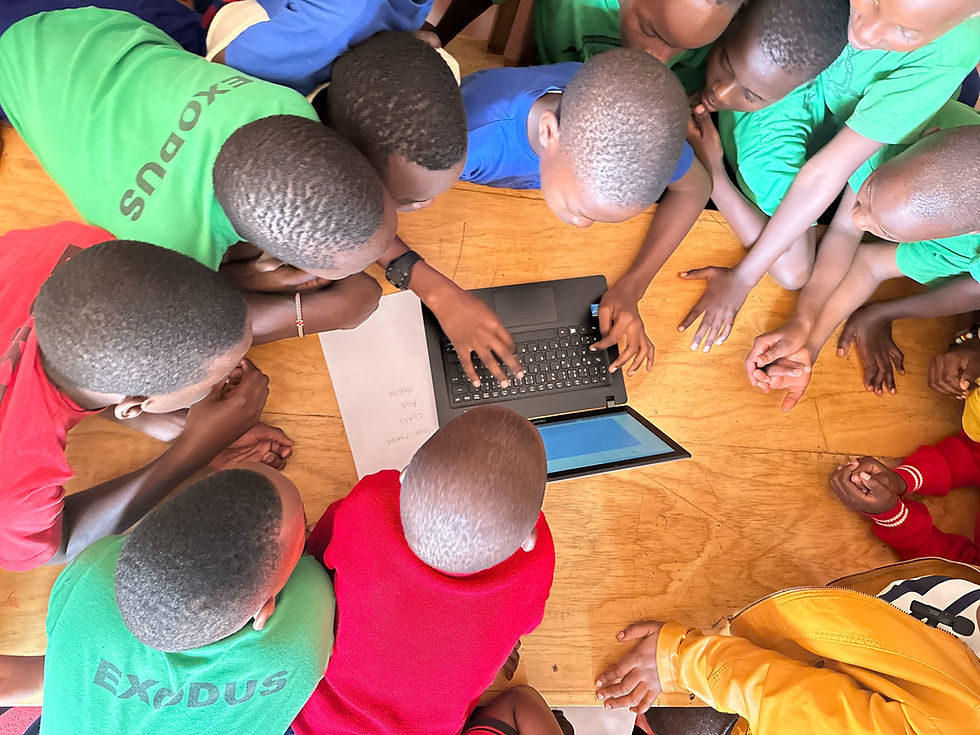Moving Beyond Branding: A Call for Dignity and Effectiveness in Aid Efforts
- Jay Mawaka-Smith
- Sep 5, 2023
- 3 min read

In the realm of global aid, a pressing concern has come to the fore – the overuse of branding that risks overshadowing the true purpose of assistance. The branding bonanza, often referred to as a neo-colonialist "arms race," is raising eyebrows and prompting questions about its impact on the intended recipients. As the aid landscape evolves, it's crucial to re-evaluate the role of branding and its consequences.
The intent of humanitarian aid is to alleviate suffering, not to serve as a platform for public relations. Struggles and crises should not be exploited as campaigns. The current trend of turning aid supplies into billboards reflects a subtle form of neo-colonialism, as the branded gifts or rations inadvertently emphasise the source of funding, placing recipients in a subordinate position.
Jan Egeland, from the Norwegian Refugee Council, aptly characterises this as "a carnival of names and flags and logos" plastered across everything from school bags to health facilities. The excessive emphasis on branding by donors, UN agencies, and international NGOs has stirred concern. It's disheartening to see children in need inadvertently become walking advertisements for their benefactors.
In the competitive landscape of funding, agencies and NGOs are compelled to engage in branding to meet visibility expectations from donors and taxpayers. However, this practice carries tangible consequences:
Undermining Sovereignty: The excessive branding undermines host countries and governments, as it often obscures the role of local entities in the aid distribution process.
Operational Delays: The demand for branded materials can lead to delays in aid delivery, as agencies wait for specific supplies to be labelled.
Emotional Impact: Branded aid items can lead to feelings of embarrassment and shame among recipients, particularly children who are already facing difficult circumstances.
Distorted Focus: The emphasis on branding detracts from assessing the true impact of aid efforts and shifts attention to donor recognition.
Reinforcing Stereotypes: The branding perpetuates the stereotype of aid beneficiaries as passive recipients, rather than recognising their agency for change.
This branding frenzy is also associated with a phenomenon known as "white saviorism," diverting attention from the essential work carried out by locally-led nonprofits. These organisations, often operating under resource constraints, strive to sustain their communities and enact meaningful change. Their innovative programs and dedicated efforts deserve recognition.

"The UNICEF backpacks have been praised by some for their potential to improve the quality of education for children, but others have criticised them as being nothing more than a way for UNICEF to promote its brand."
This self-promotion goes against every ideal that UNICEF claims to hold dear.
In this context, it is imperative to reshape the narrative surrounding aid branding:
Shift the Focus: Major aid organisations should redirect their branding efforts towards buildings, vehicles, or team uniforms, instead of overshadowing the aid supplies themselves.
Tell the Stories: Communicate impactful stories and outcomes to donors, emphasising the human aspect of assistance rather than fixating solely on logos.
Prioritise Implementation: Never let branding compromise the effectiveness and efficiency of aid implementation. The primary concern should be the well-being of recipients.
Inclusive Design: Involve the communities in the branding process, allowing them to co-design items that they will use or wear, ensuring a sense of ownership.
The essence of aid lies in its potential to bring about positive change, not in the visibility of donor brands. The call to action is clear – let's steer away from aid-vertising and restore the dignity of aid recipients. In the grand scheme of things, lives should always take precedence over logos, and the focus should always remain on delivering effective, respectful assistance.







Comments